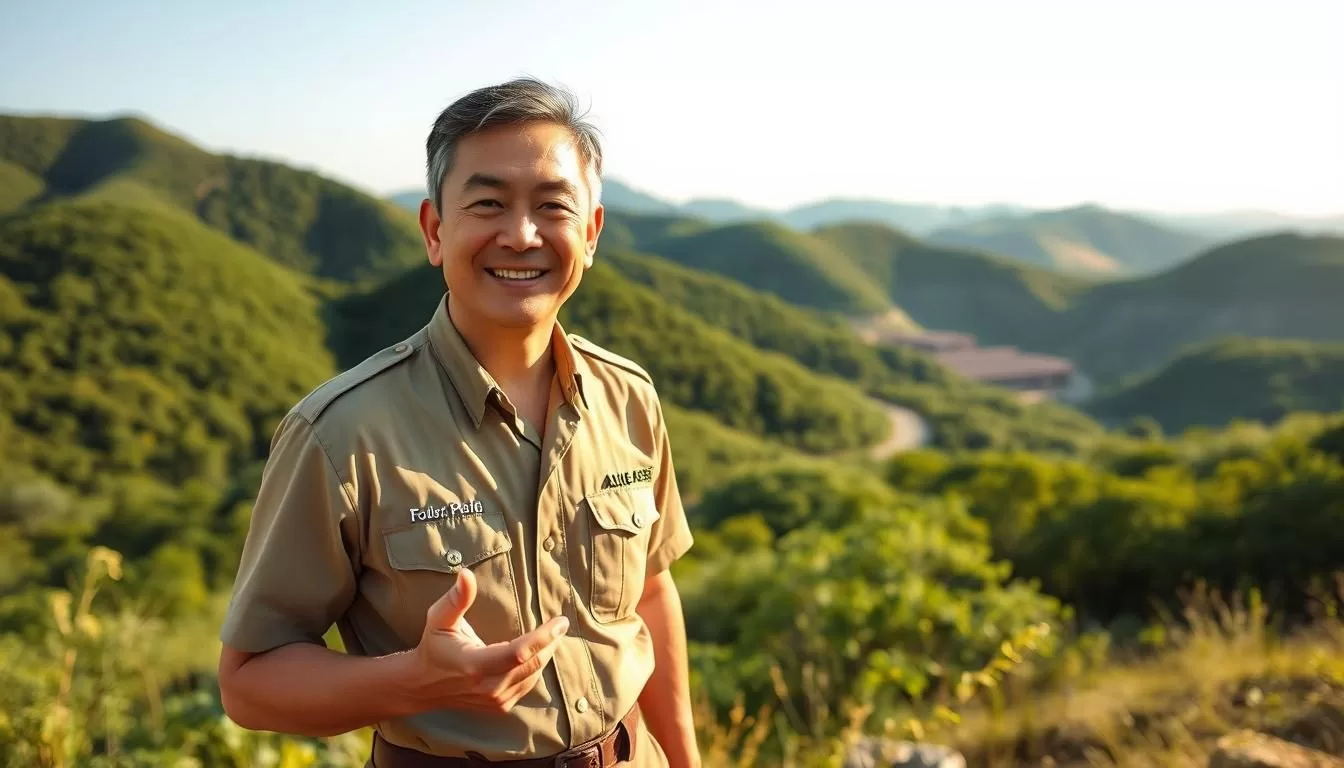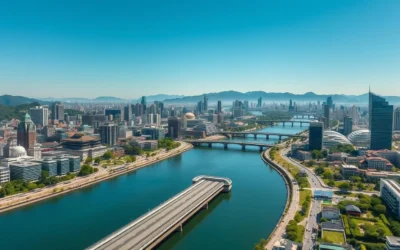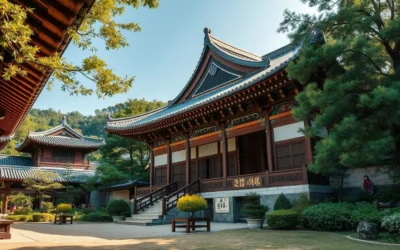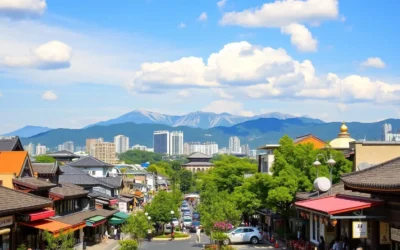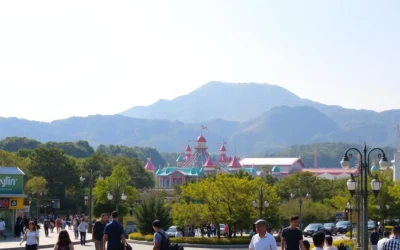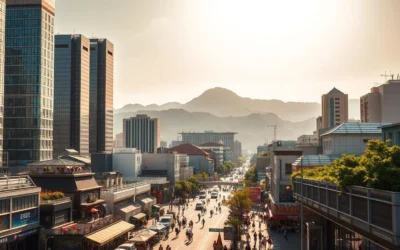✓ Accommodations✓ Flights✓ Rental Cars✓ Tours & Activities
The DMZ stands as a powerful symbol of a divided past, stretching approximately 4 kilometers wide and 248 kilometers long. Established in 1953, this area serves as a buffer zone, offering a rare glimpse into a complex history and unresolved tensions.
Visiting this place is unlike any other trip. Guided tours are mandatory, ensuring safety while providing deep insights into the region’s significance. You’ll explore historical sites, observe the north korean side, and learn about the area’s role in modern geopolitics.
Whether you’re spending a day or just a few hours, the experience is both educational and unforgettable. This article will guide you through the top options, practical tips, and everything you need to plan your tour.
The History and Significance of the DMZ
Established in 1953, this historic buffer zone has become a symbol of division and hope. It stretches over 200 kilometers long, serving as a de facto international border. This place was created following the Armistice Agreement, which ended a devastating conflict that claimed hundreds of thousands of lives.
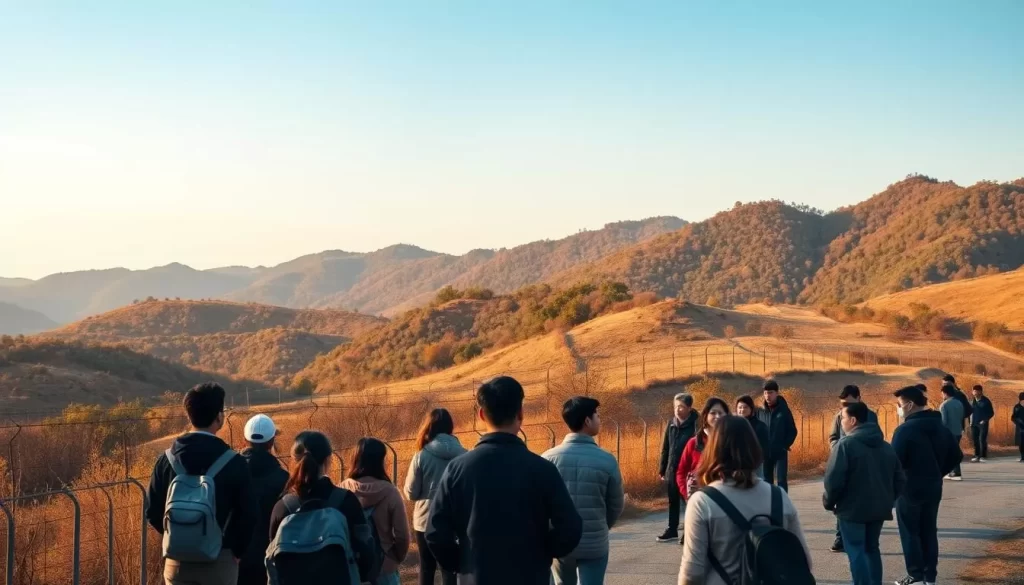
Origins and the 1953 Armistice Agreement
The area was designed as a buffer to prevent further hostilities. It divides the peninsula by two kilometers on each side, making it one of the most heavily armed borders in the world. The agreement marked a pause in the war, but it left the region in a state of unresolved tension.
Key figures like Chung Ju-yung played a role in shaping the history of this region. His efforts to bridge the divide through economic initiatives remain a significant part of its story.
Modern-Day Military Tensions and Cultural Impact
Today, the area is a dynamic symbol of division. Military presence is constant, with both sides maintaining a vigilant watch. Despite this, the region has become a unique ecosystem, home to endangered species like the Amur leopard and red-crowned crane.
For visitors, spending a day here offers a deep dive into the history of conflict and the ongoing hopes for reunification. Tours often include stops at key sites like the Joint Security Area (JSA), where you can witness the tension firsthand.
Reflect on this: What does peace mean in a place defined by division? This question lingers as you explore the area, making it more than just a trip—it’s a journey through time and emotion.
Korean Demilitarized Zone (DMZ), South Korea: Best Things to Do – Top Picks
Exploring this unique region offers a blend of history, tension, and natural beauty. A tour here is unlike any other, providing a rare chance to witness a living history. From the Dora Observatory to the infiltration tunnels, each stop tells a story of conflict and hope.
Overview of the Ultimate Guide
This guide will walk you through everything you need to know. You’ll gain historical insights, practical tips, and a detailed look at the unique stops. Whether you’re spending a day or just a few hours, the experience is designed for maximum insight.
Highlights include the Dora Observatory, where you can peer into North Korea, and the infiltration tunnels, a stark reminder of past tensions. Each place offers a deeper understanding of the area’s significance.
What Makes a DMZ Tour Unique?
What sets this tour apart is its exclusive access and structured itineraries. Expert guides provide detailed explanations, bringing the history to life. You’ll see artifacts, hear stories, and witness views that are impossible to find elsewhere.
The journey’s duration is carefully planned, ensuring you make the most of your time. Whether it’s a half-day or full-day option, every moment is packed with meaning. This isn’t just a trip—it’s a way to connect with a pivotal chapter of modern history.
Must-See Attractions in the DMZ Region
Step into a world where history and tension intertwine, offering a unique glimpse into a divided past. This area is home to some of the most iconic sites, each telling a story of conflict, hope, and resilience. Whether you’re spending a day or just a few hours, these attractions are must-sees on your trip.

Imjingak Peace Park and Its Memorials
Imjingak Peace Park, located just 7 kilometers from the Military Demarcation Line, is a place of reflection and remembrance. Here, you’ll find memorials dedicated to those affected by the conflict, including the symbolic Bridge of Freedom. This bridge represents the hopes of reunification and serves as a poignant reminder of the area’s history.
Millions visit this park annually, making it a key stop on any tour. Your guide will share stories of the past, helping you understand the deep emotional significance of this place.
Dora Observatory, the Third Tunnel, and Unification Village
For breathtaking views of the North, head to Dora Observatory. With 500 seats and VIP rooms, it’s the perfect spot to observe landmarks like the Kaesong Industrial Complex. The panoramic views are both awe-inspiring and sobering, offering a rare perspective on the divided peninsula.
Next, explore the Third Infiltration Tunnel, a 1.6-kilometer-long passage that once served as a potential invasion route. Walking through this claustrophobic tunnel is a thrilling experience, highlighting the tension that still exists in the area.
Finally, visit Unification Village, a living community within the buffer zone. This unique place showcases the resilience of those who call this area home. It’s a reminder that life continues, even in the shadow of conflict.
Each of these attractions offers a different perspective, making your tour both educational and unforgettable. With a knowledgeable guide, you’ll gain insights that bring the history of this region to life.
Planning Your Guided DMZ Tour
Planning your visit to this historic region requires careful preparation to ensure a smooth and enriching experience. Whether you’re booking your first tour or revisiting the area, understanding the logistics is key to making the most of your time.
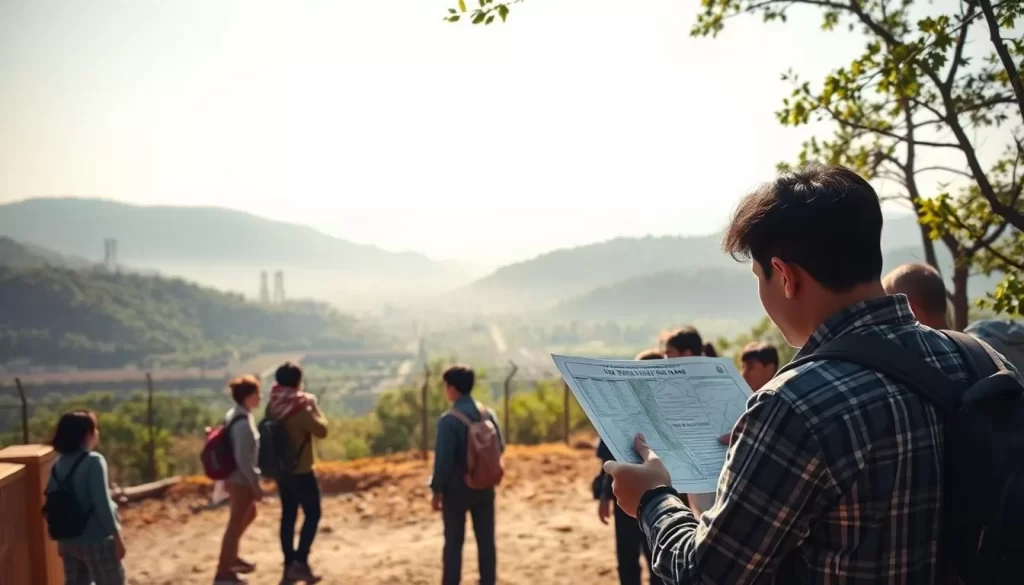
How to Book the Right Tour
Booking a tour is straightforward, but choosing the right one can make a big difference. Trusted operators like offer a variety of options, from half-day to full-day itineraries. These tours often include stops at key sites like the infiltration tunnel and memorials, ensuring a comprehensive experience.
Make sure to check the inclusions, such as pickup services and meals, before booking. Some tours require advance reservations, especially those visiting restricted areas like the Joint Security Area (JSA).
Essential Travel Tips and What to Expect
Before your trip, prepare for a unique experience. Tours typically last between 4 to 8 hours, depending on the itinerary. Wear comfortable clothing, as you’ll be walking and exploring for extended periods. Closed-toe shoes and long sleeves are mandatory in certain areas.
Always carry your passport, as it’s required for entry beyond the Civilian Control Line (CCL). Your guide will provide clear instructions on safety procedures, including restrictions on photography and where to store personal items like bags.
| What to Bring | What to Expect |
|---|---|
| Passport | Strict dress code |
| Comfortable shoes | 4-8 hour duration |
| Water and snacks | Photography restrictions |
For a deeper dive into the region’s history, consider pre-tour research using resources like official guides. This will help you appreciate the significance of each site you visit.
With the right preparation, your tour will be both educational and unforgettable. Follow your guide’s instructions, stay curious, and embrace the unique atmosphere of this historic place.
Exploring Nearby Landmarks and Hidden Gems
Beyond the main attractions, the surrounding area offers a treasure trove of cultural and historical gems waiting to be explored. Whether you’re spending a day or just a few hours, these nearby spots add depth to your trip and provide a fuller picture of the region’s heritage.
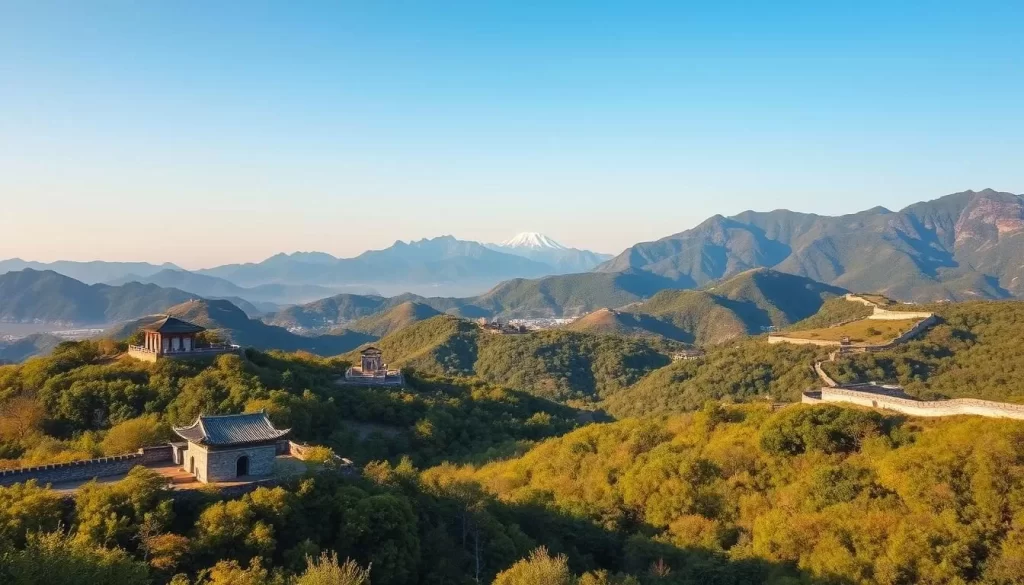
Local Cultural Spots and Scenic Views
For a break from the tension, visit the Naksan Mountain Trail, part of Seoul’s City Wall. This 18.6-kilometer trail offers stunning views and a peaceful escape from the bustling city. Another must-see is Gwangjang Market, where you can sample authentic street food and shop for traditional goods. It’s open daily from 9:00 AM to 10:30 PM, making it a perfect stop during your tour.
If you’re looking for a cultural experience, consider a kimchi cooking class. Priced at around $70 per person, it’s a fun way to connect with local traditions. These activities not only enrich your trip but also offer a glimpse into everyday life outside the heavily monitored zones.
Additional Historical Sites and Unique Finds
For history buffs, the Pohyon Buddhist Temple is a hidden gem. Dating back to the 11th century, it’s a testament to the region’s resilience and cultural heritage. Another unique find is the Manpok Waterfall Valley, a natural wonder that showcases the area’s lush beauty.
Don’t miss the chance to explore the Han River’s 100 kilometers of cycling and pedestrian trails. It’s a great way to enjoy the scenery while staying active. Your guide can provide insightful commentary on these lesser-known sites, making your tour even more memorable.
To make the most of your time, plan your itinerary carefully. Combine these hidden gems with the main attractions for a well-rounded experience. For more tips on exploring the region, check out this .
Exploring these nearby landmarks and hidden gems adds a unique layer to your trip. It’s a chance to see the region through a different lens and create lasting memories.
Conclusion
Your journey through this historic region is a blend of education and emotion. From the peace parks to the infiltration tunnels, each site tells a story of conflict and hope. A guided tour ensures you gain deep insights while staying safe.
Plan your visit carefully. Set aside a full day to explore the main attractions and nearby cultural spots. Experienced guides will help you navigate the area, making the most of your time.
Don’t miss the chance to try local food and explore hidden gems. These add a unique layer to your trip, enriching your understanding of the region’s heritage.
Ready to witness history firsthand? Start planning your tour today and experience this unforgettable journey. For more tips, check out this comprehensive guide.
The above is subject to change.
Check back often to TRAVEL.COM for the latest travel tips and deals.
